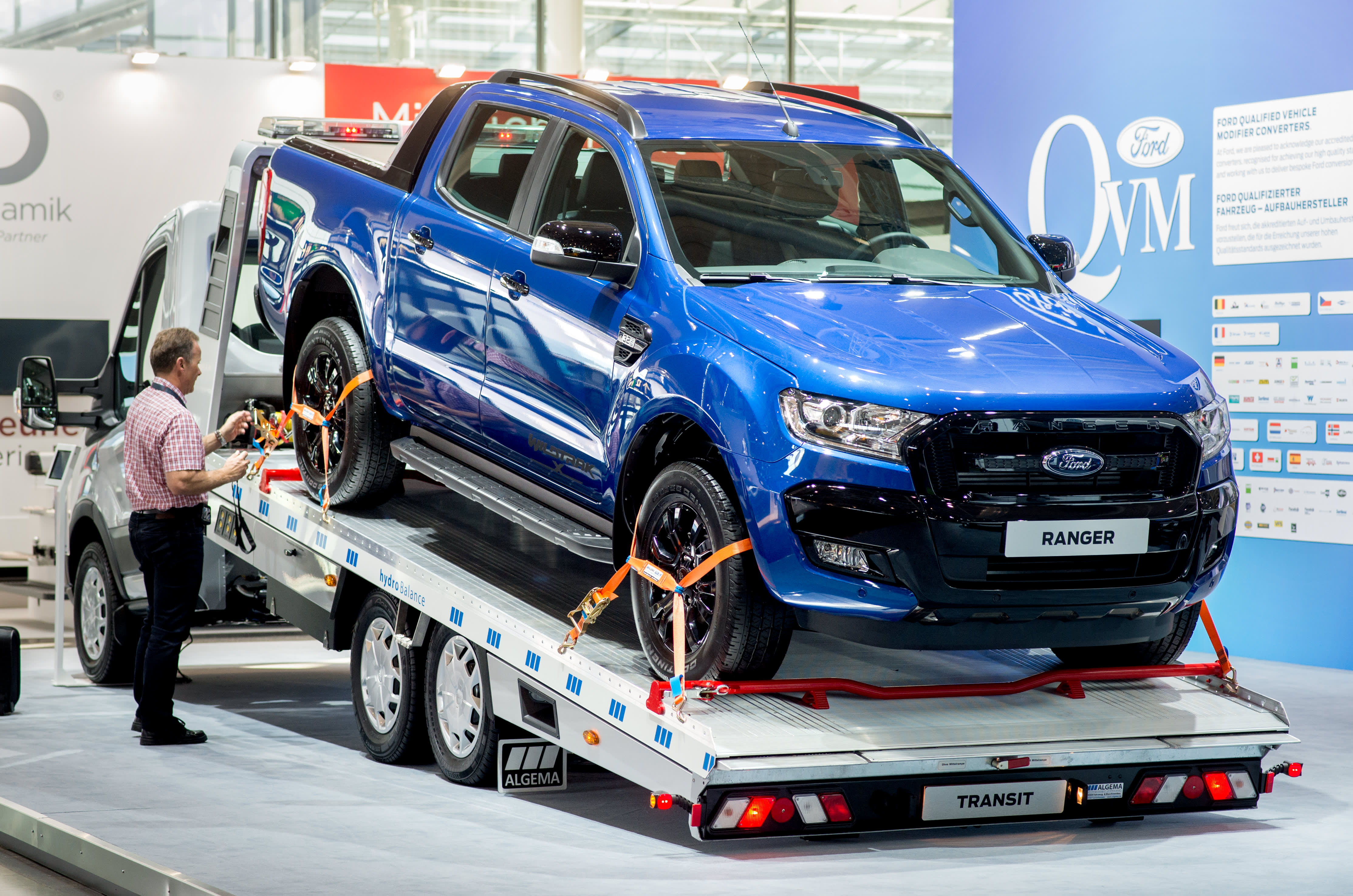Table of Contents
- – FWD vs AWD: A Side-by-Side Breakdown
- – What Does FWD Mean in Your Ford?
- – What is All-Wheel Drive (AWD)?
- – Performance Comparison: Ford AWD and FWD
- – Ford Vehicles: Choosing Between FWD and AWD
- – Fuel Economy of FWD and AWD Ford Models
- – Choosing the Right Drivetrain for Your Needs
- – Modern Ford of Boone ...

FWD vs AWD: A Side-by-Side Breakdown
Choosing the right drivetrain is an important decision when shopping for a new vehicle. The difference between All-Wheel Drive (AWD) and Front-Wheel Drive (FWD) can impact performance, fuel efficiency, and handling. At Modern Ford of Boone, we aim to help you navigate these choices and find the best option for your needs.
What Does FWD Mean in Your Ford?
In Front-Wheel Drive (FWD), the power from the engine is directed to the front wheels. FWD vehicles are commonly found in smaller, more affordable cars due to their lightweight and fuel-efficient design. FWD offers good handling in dry and slightly wet conditions and tends to be cheaper to maintain compared to AWD systems.
While FWD is efficient, it can struggle in severe weather conditions like snow, ice, or wet roads. Because the power is only delivered to the front wheels, it may lose traction in difficult conditions, making driving less predictable.
What is All-Wheel Drive (AWD)?
In contrast, All-Wheel Drive (AWD) delivers power to all four wheels of the vehicle. This feature enhances stability and traction, especially when driving on slippery roads, off-road trails, or in adverse weather conditions like rain and snow. AWD helps distribute power to the wheels that need it the most, reducing wheel spin and improving overall control.
While AWD offers superior handling and performance in slippery or off-road conditions, it tends to be heavier and less fuel-efficient than FWD systems. Additionally, AWD systems can be more expensive to maintain due to their complexity and the added components involved in transferring power to all four wheels.
Performance Comparison: Ford AWD and FWD
The performance and handling differences between FWD and AWD depend on where and how you drive. If you mostly drive in mild weather and on paved roads, FWD vehicles tend to provide enough traction. FWD also offers better fuel efficiency, which makes it a smart option for those with long commutes.
On the other hand, if you live in an area with harsh winters, rugged terrain, or often drive on dirt roads, a Ford vehicle with AWD will offer enhanced stability and better traction. Whether you're driving through snowstorms or navigating muddy trails, AWD provides the confidence and control you need to handle challenging conditions.
Ford Vehicles: Choosing Between FWD and AWD
Ford offers a wide range of vehicles with both FWD and AWD options. For example, popular Ford models like the Ford Escape, Ford Focus, and Ford Fusion offer FWD for those looking for a more fuel-efficient and cost-effective option. These vehicles provide great value for drivers who primarily use their vehicles on well-maintained roads.
If you're interested in an AWD Ford, consider the Ford Explorer, Ford Edge, or the Ford Bronco. These vehicles are designed to tackle tougher conditions, making them perfect for outdoor enthusiasts or anyone who needs a little extra traction.
Fuel Economy of FWD and AWD Ford Models
One of the key differences between FWD and AWD vehicles is fuel efficiency. Generally speaking, FWD vehicles are more fuel-efficient than AWD vehicles. This is because FWD systems are lighter and simpler, which reduces the overall weight and complexity of the vehicle. As a result, vehicles with FWD tend to use less fuel, which is a major consideration for many buyers.
AWD vehicles, while offering enhanced traction and stability, tend to be less fuel-efficient due to the additional weight and mechanical components required to power all four wheels. That said, for drivers who frequently encounter adverse road conditions, the benefits of AWD often outweigh the slight decrease in fuel economy.

Choosing the Right Drivetrain for Your Needs
Choosing between FWD and AWD depends on your lifestyle. If you mostly drive on highways or city streets and experience mild weather, FWD might be the ideal option for you. It's economical and requires less maintenance, making it a practical choice.
If you often encounter challenging driving conditions, such as snow, ice, or rough terrain, AWD is the better choice. It offers enhanced stability and control, ensuring your safety and confidence behind the wheel.
Table of Contents
- – FWD vs AWD: A Side-by-Side Breakdown
- – What Does FWD Mean in Your Ford?
- – What is All-Wheel Drive (AWD)?
- – Performance Comparison: Ford AWD and FWD
- – Ford Vehicles: Choosing Between FWD and AWD
- – Fuel Economy of FWD and AWD Ford Models
- – Choosing the Right Drivetrain for Your Needs
- – Modern Ford of Boone ...
Latest Posts
Get the Best Mazda Deals in Cincinnati
What Cars And Truck Salespeople Will Not Tell You About Discount Rates
The Genuine Factor Gas Prices Keep Rising And Fall
Navigation
Latest Posts
Get the Best Mazda Deals in Cincinnati
What Cars And Truck Salespeople Will Not Tell You About Discount Rates
The Genuine Factor Gas Prices Keep Rising And Fall